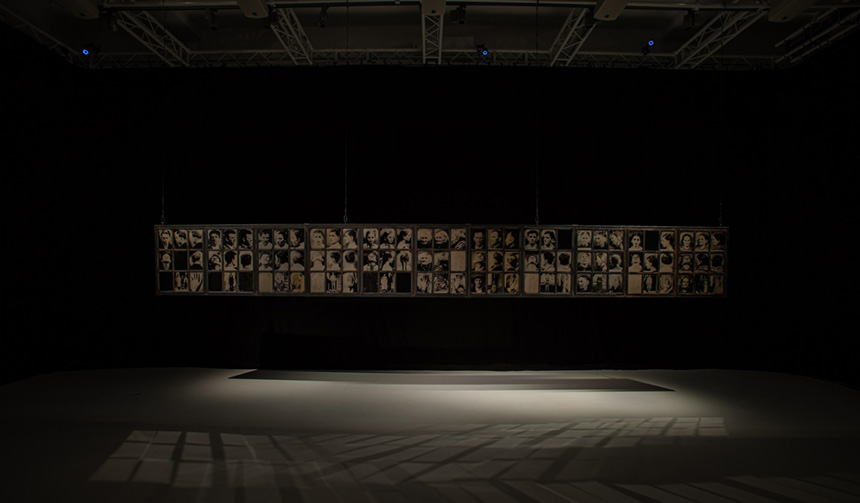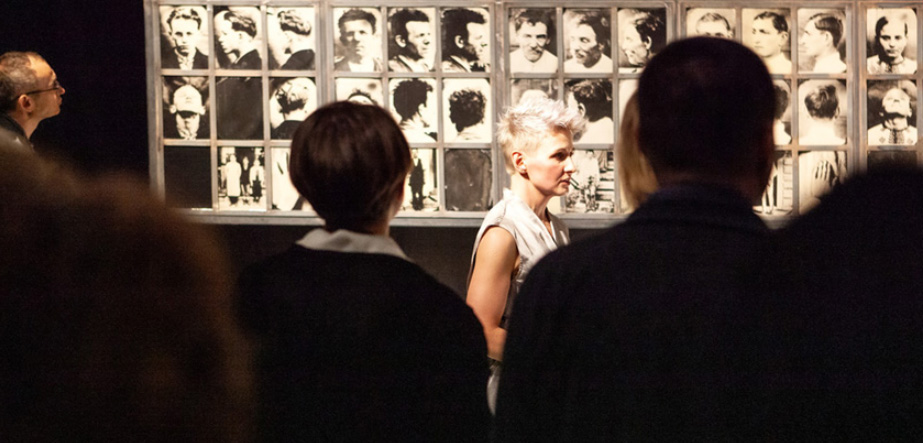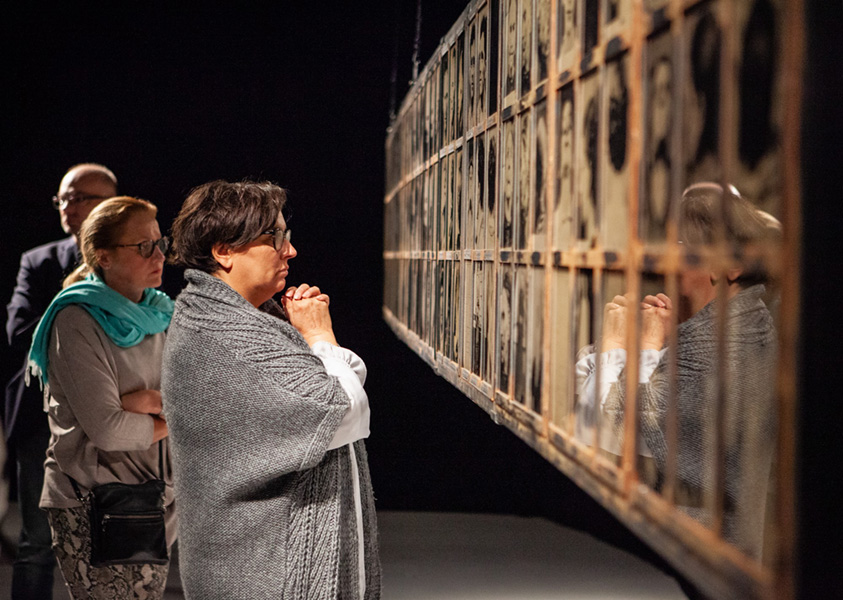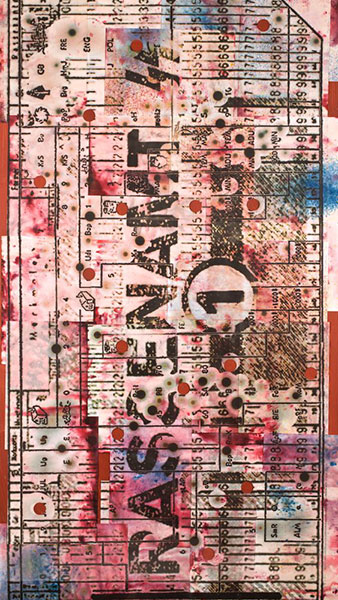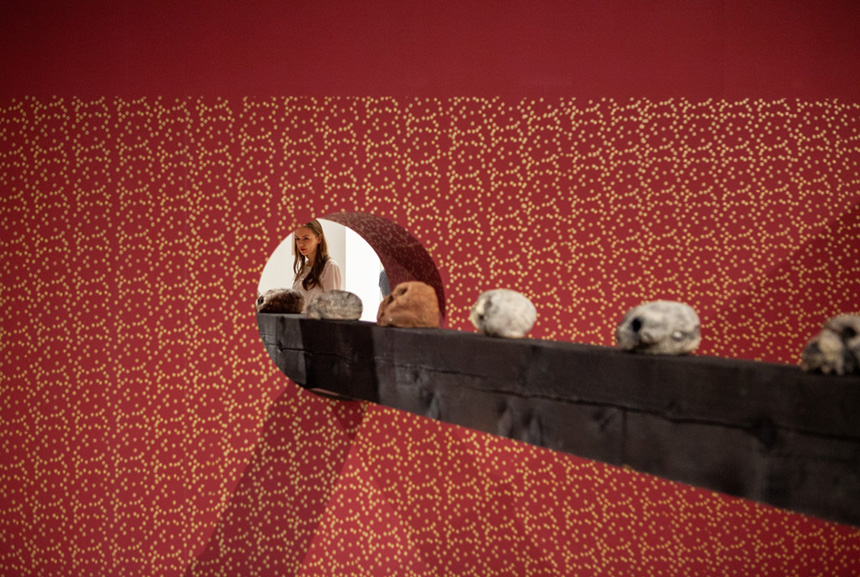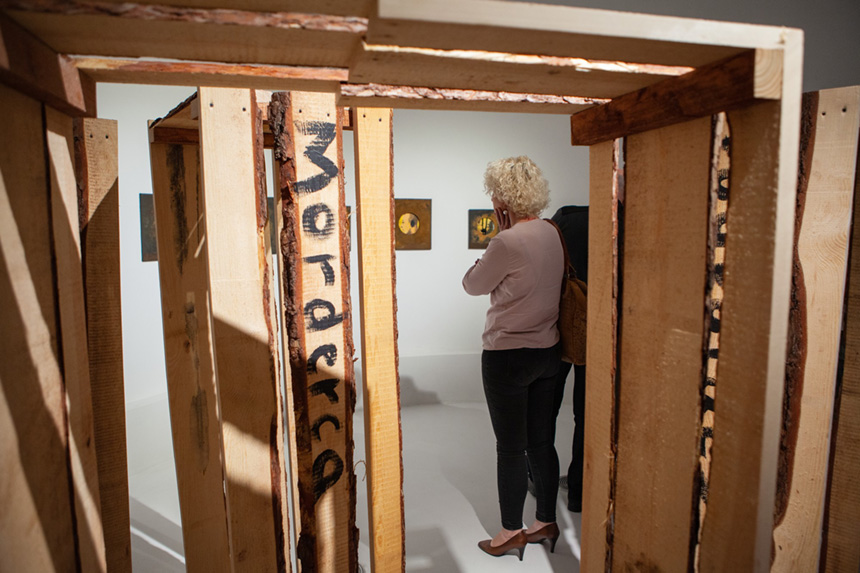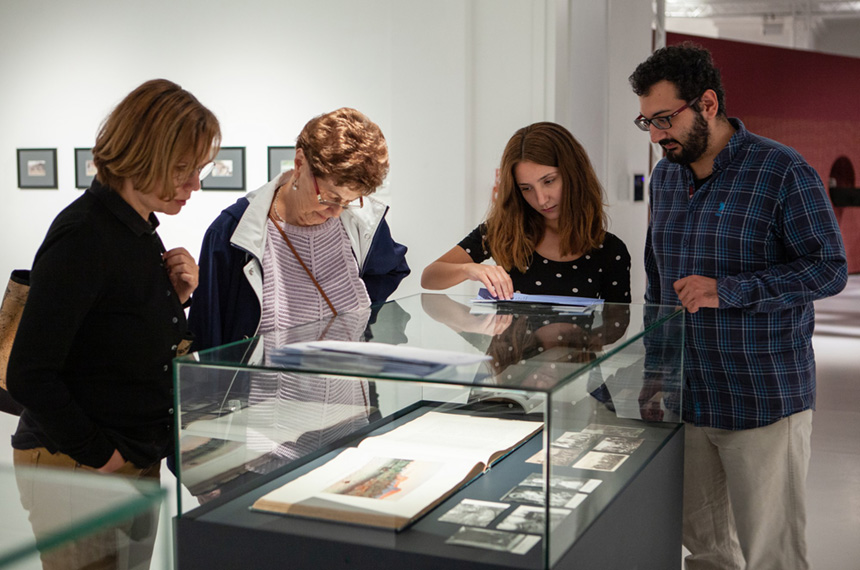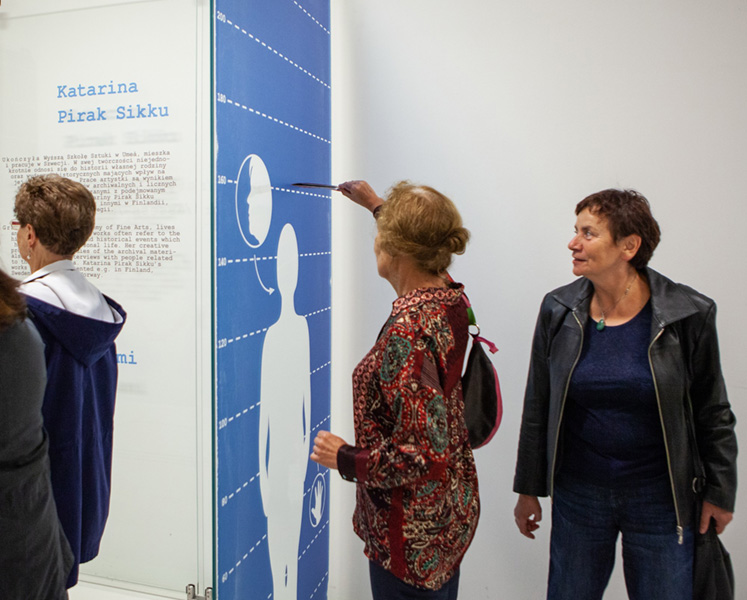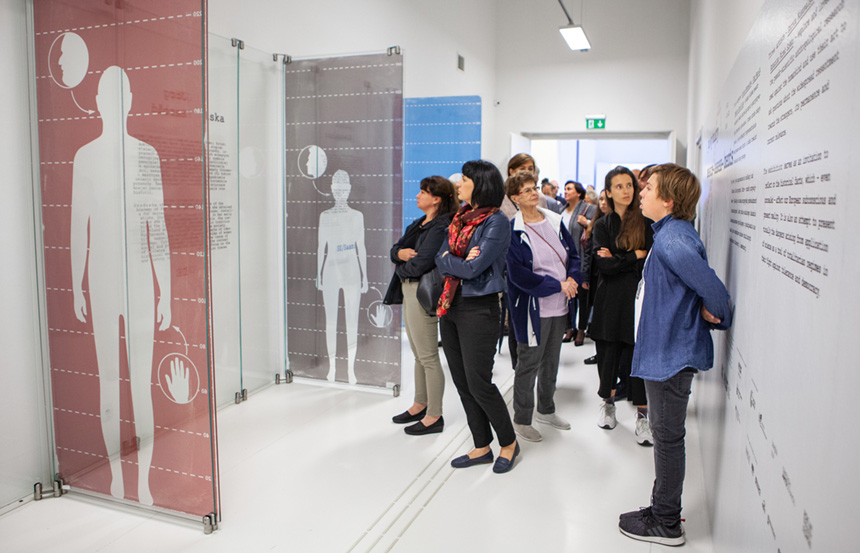Dorota Nieznalska ■ Jörg Herold ■ Katarina Pirak Sikku
8 September – 24 November 2019
Curators of the exhibition: Iwona Dorota Bigos, Martin Schibli
The three artists – Dorota Nieznalska, Jörg Herold, Katarina Pirak Sikku – follow the trails of pseudoscientific anthropological research used to pursue aims directed against humanity, and using art they are trying to ask questions about the resentment towards strangers, its durability and continued topicality.
The exhibition is organized to commemorate the 80th anniversary of the beginning of the Second World War.
The point of departure for the exhibition is the multi-part installation by Dorota Nieznalska, namely a multi-segmented installation which was an outcome of the research the artist carried out in the archives of the Institute of German Works in the East (Institutfür Deutsche Ostarbeit, IDO), established by Governor General Hans Frank in Kraków in 1940. One of its sections was involved in the scientific study of the anthropological data concerning various ethnic groups living at that time in the south and the east of Nazi-occupied Poland. The documents obtained with the use of measurement, questionnaire surveys, photographs and medical examination, served as evidence that the selected groups were not suitable for ‘Germanization’, and therefore some of them should be exterminated.
The research conducted by Nieznalska inspired the German artist Jörg Herold, documentary archaeologist, who for years has addressed the issues of research on race in his works, referring to the discourse of the 19th century theoreticians: German anthropologist J. F. Blumenbach, and Italian psychiatrist and criminologist C. Lombroso to create his new project. Herold’s new installation Ostarbeit offers a kind of extension of the works by the Polish artist and also a symbolic closure of the research conducted by the scientists employed by the Nazi institute.
The Polish-German perspective is further expanded by the presentation of works by Katarina Pirak Sikku from Sweden. The artist, in examining the history of her family belonging to the Saami ethnic group, makes use of the archive collection of the former State Institute of Race Biology in Uppsala – which was the first state institution in the world dedicated to scientific racism. The research the institute conducted, providing a set of features typical for ‘pure Swedish ethnicity’, later also resulted in the late thirties and forties in frequent sterilization of persons with physical and intellectual disabilities, and members of the so-called inferior races. The scientific methods and concepts developed by the Swedish institute were later partly adopted by the Nazi scientists working for the Third Reich. In her latest work, Pirak Sikku also addresses the contemporary problems affecting the Swedish Saami, showing the impact of this ‘scientific research’ on the loss of land that the Saami had used for centuries. The theme of Saami land and the control of those rich in resources areas by the Swedish state is today a topic that can be generally described as post-colonial heritage.
The exhibition is accompanied by a catalogue presenting texts written by the curators and scientists specializing in the history of race research in Europe and the verification of the results of studies by IDO, which constitute an important historical message on the subjects of war, occupation, genocide and martyrdom.
As a part of the Independence Day celebration on Tuesday, November 12, admission to the permanent and temporary exhibition at the Four Domes Pavilion will be free.
Dorota Nieznalska (PL) – Polish visual artist, graduate from the Faculty of Sculpture and Intermedia at the Academy of Fine Arts in Gdańsk. Lives and works in Gdańsk. She participated in more than a hundred group and individual exhibitions in Poland and abroad. Her works are part of public and private collections. In 2013 she obtained a PhD degree at the Faculty of Sculpture / Department of Intermedia at the Academy of Fine Arts in Gdansk. She creates sculptures, installations, photographs and videos. Her early work made use of religious symbols. She combined the question of the powerful catholic tradition in Poland with male domination in society. Furthermore, she addressed the subject of identity, sexuality and stereotypical roles of women and men. At present she is intrigued by social and political relations in the context of violence. Her research projects concern memory places, traces of memory/forgetting and history.
Jörg Herold (DE) is one of the major German visual artists. He lives and works in Lepizig. He is interested in the mechanisms of storing and safeguarding memory, including the cultural one. In his research he investigates both scientific sources, and historical literature. In his films, installations, drawings and paintings he addresses imagined and real places of memory. He calls himself “documental archaeologist”. In 1991 and 1995 he participated in the Biennales in Sidney and Venice, while in 1997 he presented his works at documenta X. In 2003 he created an architectural project called Lichtspur aut Dateline for Berlin’s Bundestag.
Katarina Pirak Sikku (SE/ Sámi) Swedish visual artist, originating from Sámi ethnic group. She received the MFA Fine Arts Scholarship at the Umeå University (2005). Her photographs, drawings, installations and texts refer both to her family history, as well as historical facts which influenced her personal life. In her art Pirak Sikku often uses subtle displacements, while her works provoke a whole array of emotions from crying to laughing. She exhibited in Korundi in Rovaniemi (Finland), Grafikens hus in Mariefred (Sweden), Museo de Arte Moderno de Medellín in Columbia, Árran lulesamisk senter, Drag n(Norway), and
Bildmuseet in Umeå (Sweden).
Martin Schibli (SE/CH) – is one of the most renowned Swedish curators working in international contexts. Due to his curatorial concept as an art director (2006–2012), the Konstmuseum in Kalmar turned into one of the best art institutions in Sweden. 2015–2016 he was art director of Konsthall in Växjö. His curatorial practice was shaped by individual exhibitions of eg. Artur Żmijewski, Swetlana Heger, Guy Ben-Ner, Marina Naprushkin and Georg Baselitz, as well as group exhibitions bringing up the subjects of world political conflicts, social criticism 1993–2005, or Swedish conceptual art. He curated exhibitions in: Kunsthalle in Rostock, City Gallery in Gdańsk, Museum of Contemporary Art in Moscow, NCCA Ural in Samara during Shiryaevo Biennale, and Moderna Museet in Stockholm. Over the last 10 years Schibli curated ca. 95 exhibitions in numerous countries, among them: Sweden, Russia, Germany, Lithuania, Moldova, Belarus and Poland. He also lectures at different universities and art schools, eg. Linné Umeå University, Ölands Art School and Royal Art Academy, as well as in countries like Poland, Switzerland, Russia and Lithuania. In Sweden he is known as the author of the book: “How to become a contemporary artist in three days? Introduction to a survival in the art world” which combines theory and practice of contemporary art.


